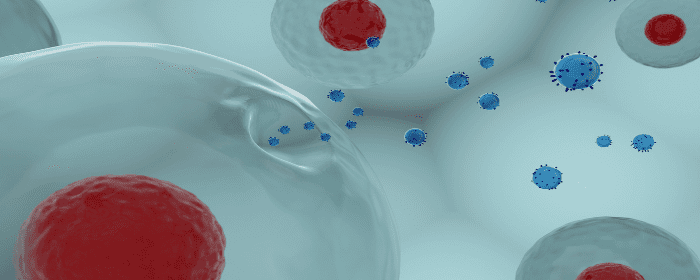Stem Cell Therapy for Back Pain
STEM CELL THERAPY FOR BACK PAIN Receive Tomorrow’s Treatment – Today! Regenerative Medicine, also known as stem cell therapy for back pain, is an alternative option to help manage the symptoms of chronic back pain. Request Information Packet Google Rating4.7Based on...
Using Stem Cells to Treat Musculoskeletal Pain
Virtually everyone will have musculoskeletal pain at some point in their lives. For most, it is a short-lived pain that goes away in a few minutes or a few days. In many, however, musculoskeletal pain is a chronic, daily struggle. They wake up in pain, struggle with pain throughout the day, and pain interferes with their ability to sleep at night. Here is how doctors are using stem cells to treat musculoskeletal pain.
There are surprisingly few good treatments for chronic musculoskeletal pain. One could take ibuprofen (Advil), naproxen (Aleve), or acetaminophen (Tylenol) to treat short term musculoskeletal pain. However, people with chronic musculoskeletal pain need to take these drugs multiple times a day, every day. Over time, this can damage the liver or the kidneys.
Opioids are powerful painkillers but are not good choices for treating chronic musculoskeletal pain. People who take opioids for more than a few weeks for non-cancer, musculoskeletal pain are at great risk of becoming physically dependent on the drug. Stated another way, they may become addicted to opioids.
Mesenchymal stem cells are an attractive tool to treat musculoskeletal pain because of two main factors. First, they have the ability to find their way to the site of injury and inflammation. In other words, they collect at the site of musculoskeletal pain. Second, stem cells release a large number of substances into the surrounding area that block or reduce inflammation.
Researchers have been making good progress in initial studies of mesenchymal stem cells for various kinds of musculoskeletal pain. For example, people with musculoskeletal pain caused by osteoarthritis of the knee who received stem cells had profound reductions in pain, even great relief the knee debridement surgery (i.e. orthopedic surgery to remove damaged joint tissue and make the joint surfaces smoother. In separate work, Mesenchymal stem cells reduced knee pain improved physical therapy performance and increased the volume of the knee joint affected by osteoarthritis. Similar results have been obtained in people with musculoskeletal pain and osteoarthritis in the hip and foot.
It is important to note that the procedure is safe. In a review of 844 autologous Mesenchymal stem cells infusion procedures for the treatment of osteoarthritis, there were no major adverse events reported.
Musculoskeletal pain is very common. When people develop chronic musculoskeletal pain, it can be debilitating and dramatically diminish the health-related quality of life. While more work is needed, the results detailed here provide hope to the millions of people who struggle with daily musculoskeletal pain.
Reference: Labusca, L. et al. (2015). Stem cells for the treatment of musculoskeletal pain. World Journal of Stem Cells. 2015, Jan 26; 7(1): 96-105.

Using Exosomes to Treat Kidney Diseases: State of the Research
Kidney diseases are among the most expensive and most debilitating diseases. Total costs are in excess of $50 billion a year, with $30 billion spent on people with end-stage renal disease including hemodialysis and kidney transplantation. People with kidney diseases have diminished quality of life, and substantial amounts of their time are devoted to medical treatment. Not surprisingly, researchers are aggressively pursuing novel therapies to treat kidney diseases before they result in end-stage renal disease. Stem cells and exosomes are among the most exciting and the most promising research topics in this area.
Most cells release tiny packets called extracellular vesicles. The most notable extracellular vesicles are exosomes. While small, exosomes are filled with high concentrations of potentially helpful substances such as RNA, DNA, and proteins. While most cells release exosomes, researchers are particularly interested in exosomes released by stem cells. It is within these exosomes that stem cells pass along the substances that make stem cells helpful in tissue repair and regeneration.
Zhang and coauthors reviewed the recent advances that have been made using exosomes to treat kidney diseases. Most of the work has focused on acute kidney injury or AKI. Acute kidney injury can lead to chronic kidney disease and kidney failure. Thus, if one could stop AKI, they could potentially reduce the risk of chronic kidney disease.
Many different research groups have shown the power of exosomes and other extracellular vesicles in treating acute kidney injury. Exosomes taken from mesenchymal stem cells protected kidney cells from cell death and fibrosis and helped them repair themselves. The same was true of exosomes derived human umbilical cord stem cells. Even stem cells taken from human liver cells were able to improve kidney function after injury. There are many other examples.
Gatti et al. reported that extracellular vesicles derived from human adult mesenchymal stem cells could protect against acute kidney injury, but, most impressively, also halted the progression of AKI to chronic kidney disease. This finding has important implications for people who suffer from serious acute kidney illnesses, such as kidney ischemia. It means that—if confirmed in human studies—stem cell-derived extracellular vesicles can help treat kidney disease in the short term and reduce the risk of that illness becoming a chronic, debilitating problem.
Further research is needed in this field but, initial results confirmed by many laboratories have created well-founded enthusiasm for the future.
Reference: Zhang, W. et al. (2016). Extracellular vesicles in diagnosis and therapy of kidney diseases. American Journal of Physiology – Renal Physiology. 2016, Nov 1; 311(5): F844-F851.

Bringing Autologous Stem Cell Treatments to the Elderly
Autologous stem cell treatments offer several advantages over other forms of stem cell treatment. In autologous stem cell treatment, a patient’s own stem cells are retrieved, processed, and injected back into the patient’s body. There is no need for a stem cell donor, and the entire procedure can take place in the same medical office. Since the patient’s own cells are used for an autologous stem cell treatment, there is no risk of disease transmission from a donor (because there is no donor) and no risk of rejection (because they are the patient’s own stem cells). Autologous stem cell treatments has some major benefits for the elderly.
Unfortunately, younger stem cells are better for regenerative medicine than older stem cells are. Moreover, older people have fewer stem cells that can be harvested than they did when they were younger. So while autologous stem cell treatment is still advantageous, it becomes more difficult to achieve as patients get older because their stem cells are fewer and less potent. Making matters worse, older stem cells compete against more youthful stem cells, making autologous stem cell treatments potentially even less effective in older patients.
Fortunately, stem cell researchers are coming up with ways to make the most out of the stem cells that older patients still have. They still take a sample of tissue, such as fat, and harvest the stem cells contained within it. However, instead of injecting all stem cells from the sample (both older and youthful stem cells), researchers select and use only youthful stem cells. Furthermore, they make the treatments even more effective by injecting other substances (e.g. extracellular matrix) that help youthful stem cells survive, grow, and thrive.
To demonstrate the effectiveness of their approach, researchers collected mesenchymal stem cells from about a dozen older individuals aged 65 to 86 years old. They then assorted the stem cells into different groups, separating youthful from older stem cells. They then used special factors to help the youthful stem cells grow, increasing the numbers by an impressive 17,000 times. So while only 8% of stem cells produced by older individuals are “youthful,” this laboratory process increased those numbers to a point that they can be used for stem cell treatments—even stored for future use!
The next phase of the research will be to inject these youthful stem cells into older patients and assess their effectiveness. However, even these preliminary results are exciting because they suggest that people of all ages can potentially benefit from autologous stem cell treatments, not just middle age and younger individuals.
Reference: Block, TJ et al. (2017). Restoring the quantity and quality of elderly human mesenchymal stem cells for autologous cell-based therapies. Stem Cell Research & Therapy. 2017 Oct 27;8(1):239.

 St. Petersburg, Florida
St. Petersburg, Florida
